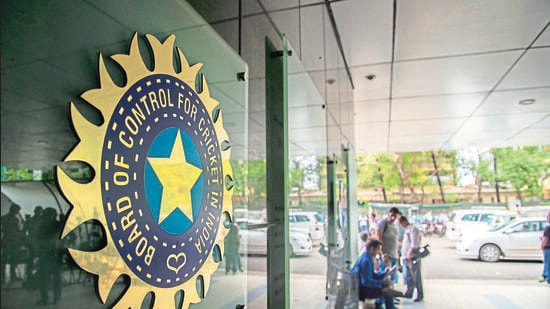Catapulting IPL stakeholders into a higher financial plane
On 12 June, the Indian cricketing board will begin auctioning broadcast rights for the next five-year cycle of the Indian Premier League (IPL) – the most lucrative property in the Indian sporting landscape.
On 12 June, the Indian cricketing board will begin auctioning broadcast rights for the next five-year cycle of the Indian Premier League (IPL) – the most lucrative property in the Indian sporting landscape. The base prices set for the auction will result in a doubling over the previous five-year cycle, for which Star paid about ₹3,270 crore a year. How much broadcasting rights are sold for is not just an income statement for the Board for Control of Cricket in India (BCCI). Given how the IPL is structured as an operating entity and a business model, these TV rights are the centerpiece of revenue for every stakeholder in the IPL ecosystem. Besides BCCI, notably, this includes the 10 teams and their team owners, and the 250 players employed each year.

BCCI: Milking the cash cow
BCCI’s mandate is to promote cricket in India, via infrastructure, competition, grassroots initiatives, prize money and greater commercialisation of women’s cricket, among other things. For the richest cricketing board in the world, the IPL is a cash cow. From its very inception, the IPL, held for roughly two months in a year, has been big enough to match, if not exceed, BCCI’s remaining income streams. The IPL has its own profit and loss account, and the surplus from that gets added to BCCI’s income.
BCCI, a trust, has not put its annual report in the public domain since 2016-17. The numbers that can be pieced together show that as the IPL gets bigger with more teams, matches and money, its share in BCCI’s income is also going up. In 2015-16, the share of IPL surplus (basically, profits) in BCCI’s revenues was 15%. In 2020-21, this has increased to 57%. If BCCI realises a big bump in IPL broadcasting revenues, it will have a greater pool of money to funnel into the game – not that it is in any way limited by funds.
[Chart 1: Share of IPL surplus in BCCI’s income]
IPL Teams: Rising to a higher revenue band
Receipts from the sale of IPL broadcasting rights are also intrinsic to the 10 IPL teams. That’s because this entire amount, plus the umbrella sponsorships struck by BCCI for IPL, goes into a ‘central pool’. BCCI retains half of this total collection. The remaining 50% is distributed between the 10 IPL teams equally. Thus, each time a new broadcasting deal is struck, more revenue flows to the franchises. The last broadcasting deal, struck in 2017, saw the franchises rise from a revenue band of ₹100-200 crore to ₹300-400 crore.
IPL franchises have basically four revenue streams: share of central rights, income from sponsorships, sale of tickets and prize money. Besides their share of central rights, the other three streams are relatively small and inelastic. For example, sponsorship income for the Kolkata Knight Riders has ranged from ₹40-50 crore between 2015-16 and 2018-19. Meanwhile, during this period, the share of central rights in its revenues has increased from 51% to 75%. What happens on June 12 will define the size of the next revenue kicker for the 10 IPL teams.
[Chart 2: IPL teams’ share of revenue streams]
IPL team owners: Return on investment
Revenues and profits are one variable of the financial equation for owners of IPL teams, a set that is visibly defined by big business families, corporates and actors. The other key variable is valuations. Or, how much would a team sell for if an owner wanted to exit? The addition of two new teams last year – Gujarat Titans and Lucknow Super Giants – set new valuation benchmarks in the IPL.
The Lucknow franchise was sold for ₹7,090 crore, which was about four times what Pune Warriors went for in 2011 and about 16 times of the Mumbai Indians’ price in 2008. Justifying such valuations will require revenues to see brisk increase, which in the case of IPL is synchronised with each new round of broadcasting rights. Ultimately, revenues, valuations and the value of broadcasting rights all feed each other.
[Chart 3: Valuations of IPL teams]
Players: Behind the run rate
Driving all that are the players, who make the show that is IPL. Yet, even as they have pocketed unheard of salaries in Indian cricket, the benefits flowing to them have grown at a slower rate than those flowing to BCCI, teams and team owners. When the IPL started, a team could spend a maximum of ₹2020 crore on its players. By 2022, this figure had grown to ₹90 crore.
This amounted to a compounded annual growth rate (CAGR) over 14 years of a steady 11.3%. By comparison, the value of broadcast rights has grown at a CAGR of 19% and teams’ revenues and valuations upwards of 20%. Thus, while more money is flowing in, it’s the ownership (BCCI and teams) that appears to be pocketing more of this than players. And that will probably be the case this time around as well.
[Chart 4: Players’ salaries]
howindialives.com is a database and search engine for public data





